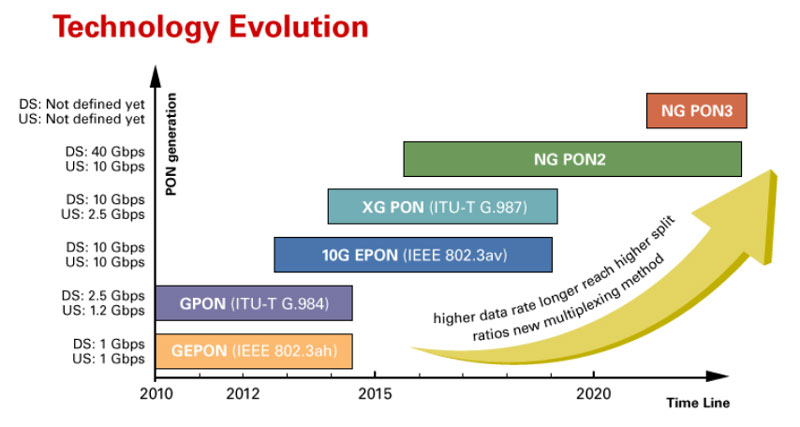PONs have attracted great attention in recent years, also from standardization bodies. Once again, the primary organizations are ITU-T and the IEEE (Institute of Electrical and Electronics Engineers).
The latter defined the “Gigabit Ethernet Passive Optical Network (GEPON)” back in 2004 in the standard IEEE 802.3ah1. It is well known and established under the name “Ethernet in the First Mile” (EFM). A symmetrical transmission procedure is used for EFM. It has identical transmission speeds of 1.25 GBit/s downstream (from the central office to the subscriber) and upstream (in the opposite direction). To control multiple access, use is made of time division multiplexing, TDM for short. Subscribers’ data streams are also encrypted for security’s sake. The standard uses point-to-point connections and is basically a version of GPON with a reach of about ten kilometers. GEPONs have been used in Asia for years.

The broadband passive optical network (BPON) is the most frequently installed network internationally. However, it is suitable for transmitting high-resolution video images such as HDTV only under certain cir cumstances. By contrast, the new Gigabit-capable passive optical network (GPON), standardized in ITU-T G.983 and G.9842, does meet this requirement. The market share of newly installed optical networks is esti mated to be about 80 percent for GPONs. The remaining share of about 20 percent (and rising) is divided between 10G EPONs and XG PONs. The 10 Gigabit Ethernet passive optical network (10G EPON) is a var iation of Ethernet in the First Mile and is defined in the standard IEEE 802.3av. ITU-T developed XG PON analogously to the above and first published it in January 2010 with the title “10-Gigabit-capable Passive Optical Network (10G-PON)” and then in June 2012 in what is now the third version under the designation ITU-T G.9873.